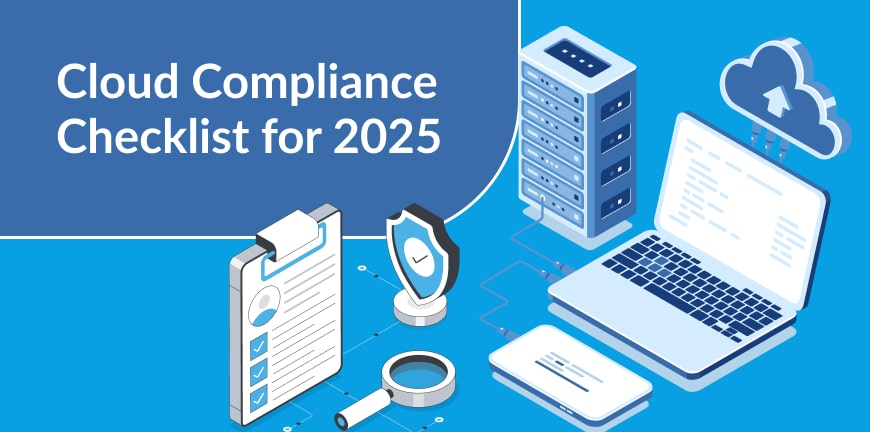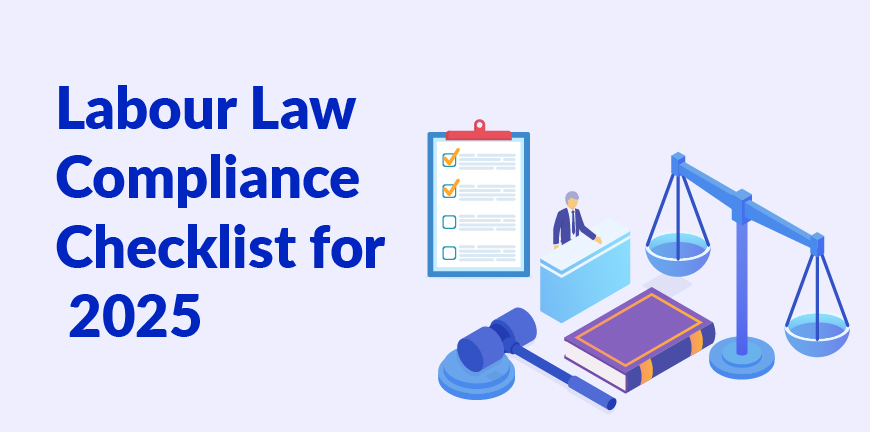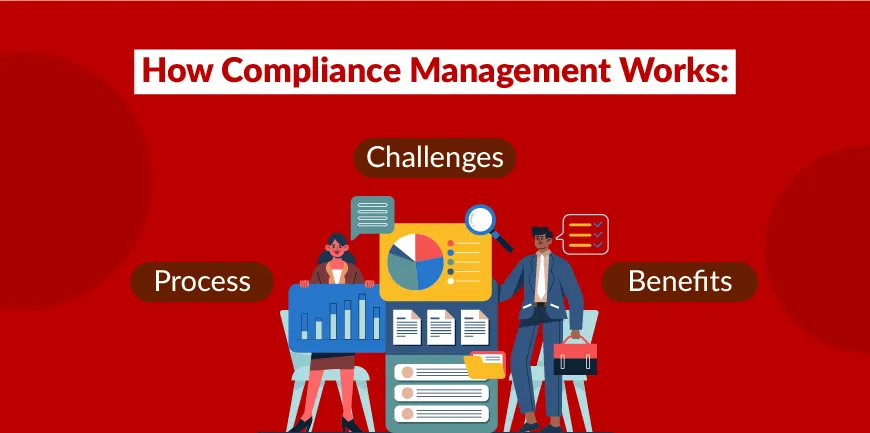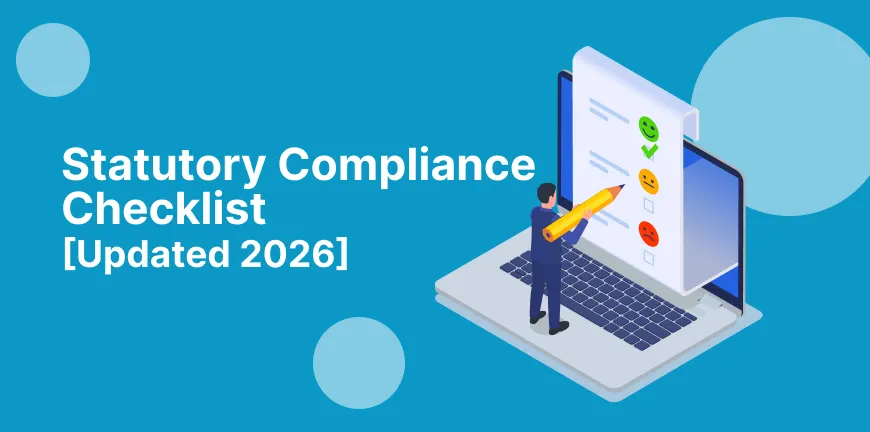
What is Selection Process: 7 Steps & Best Practices to Hire Top Talent
27/05/2025
HR Recruiter Roles and Responsibilities in 2025
31/05/2025In the modern business arena, a company that doesn’t leverage cloud computing may not survive the harsh competition and stay relevant. The cloud computing market is set to exceed $ Trillion by 2028 as per research clearly indicating its impact on businesses. The part of leveraging cloud computing is to ensure data is always protected from threats and unauthorised access attempts.
This is where cloud compliance performs the role of saviour and companies must ensure the internal practices and policies related to cloud environment are as per the legal requirements stipulated by the government agencies. Let’s discuss and get some deep insights on how we can achieve 100% compliance by using a cloud compliance checklist effectively.
What Is Cloud Compliance?
Cloud compliance is a standalone process where a company whether small or Fortune 500 that utilises a cloud computing to run its business operations must adhere to their internal cloud management practices and policies with laws and standards applicable to its products and services.
The main objective of cloud compliance is to protect sensitive data managed within the cloud environment from potential risks like unauthorised access, data breaches, phishing attacks, hacking, etc.
Some of the frameworks and regulations that regulate cloud compliance requirements include:
- Information Technology Act, 2000.
- Payment Card Industry Data Security Standard.
- ISO 27001.
- Sarbanes-Oxley Act.
- National Institute of Standards and Technology.
- Health Insurance Portability & Accountability Act.
- General Data Protection Regulation.
To push the cloud compliance efforts in the right direction, a strategic and adaptable cloud compliance checklist is paramount for companies that are using in-house or third-party cloud computing services. Any violations or deviations from the cloud compliance policies can lead to dire consequences which range from heft penalties to business closure based on the extent of the offence.
Why Use a Cloud Compliance Checklist?
Aligning with regulatory requirements is not the only objective of cloud compliance but also demonstrating a strong commitment towards ethical practices that will boost trust and reliability among employees and stakeholders.
The key reasons that make cloud compliance checklist essential for companies to improve their adherence level with IT regulatory requirements include:
1. Sensitive data protection and Enhancing trust
Companies that use third party cloud computing modules must develop comprehensive cloud compliance policies that outline the importance of protecting sensitive data related to business operations and employee information (from personal details to payroll data).
Additionally, when companies regardless of their size and market presence show eagerness to ensure cloud compliance requirements are realised from both technical and ethical aspects, it indicates employee and stakeholder well-being as being a top priority. This approach builds loyalty and trust among employees and stakeholders leading to business growth and brand value enhancement.
2. Identifying and Mitigating Legal and Financial Risks
A well churned out cloud compliance checklist that can ensure adherence with most regulations like the IT Act 2000, GDPR, HIPAA, NIST Cloud Computing Act, etc., helps in preventing legal hassles and maintaining financial stability by avoiding hefty fines and legal counsel charges.
3. Improved security Posture and Risk Management
By implementing the cloud compliance best practices defined under the checklist, organisations can detect and address security vulnerabilities proactively thereby improving security posture. Additionally, these practices help in mitigating breaches and data loss aiding in effective risk management.
4. Cost Reduction and Process Optimisation
Strategically developed cloud compliance policies will help companies streamline their processes and procedures leading to enhanced operational efficiency and higher productivity. Also, by achieving 100% cloud compliance, companies can prevent additional investment in fixing violations and legal consultation.
5. Gaining Competitive Edge
A cloud-compliant company can gain a competitive edge and attract more investment leading to better profitability and increased brand reputation.
What are the Key Elements of a Cloud Compliance Checklist
Typically, cloud compliance dictates a shared responsibility between the companies and their third-party cloud service providers. However, companies that partner with CSPs must ensure the contract terms include strict adherence to regulatory standards that govern cloud compliance policies. A common cloud compliance checklist between the company and their CSPs will help streamline the processes and procedures seamlessly.
Here are the key elements of the cloud compliance checklist:
| Cloud Compliance Checklist Element | Description |
| Data Allowed | The compliance team must clearly mention which data can be stored in cloud and which are restricted and the reason behind the restriction. |
| Tracking Data Location | Companies and CSPs must ensure data storage locations are tracked effectively since auditors may ask for data locations during inspection. |
| Management of Cloud Assets | CSPs are responsible for managing cloud infrastructure like servers, hardware, virtualisation, etc., whereas companies are responsible for the type of data stored and operations performed on the cloud. The cloud compliance policies must differentiate these aspects and assign responsibilities of compliance accordingly. |
| User Access Controls | The company must ensure only authorised users can access sensitive data both at the company’s end and CSP’s end. This prevents unauthorised access and flags when there is attempt made by fraudulent users. |
| Configuration Management | Any instance of cloud infrastructure misconfiguration is considered as a violation hence companies must use or reliable cloud compliance tools for configuration and review regularly for identifying and mitigating discrepancies. |
| Encryption of data | Companies must implement protocols and mechanisms to encrypt data so that there is not breach or unauthorised access. |
| Periodic Auditing and Continuous Monitoring | Companies must form an internal audit team to ensure the cloud compliance policies are aligning with regulations and any issues are identified and mitigated proactively. Additionally, continuous monitoring system must be in place to identify compliance risk in real time enabling companies to implement mitigation strategies accordingly. |
| Generate Cloud Compliance reports | Compliance reports play a crucial role in proving cloud compliance and companies must ensure periodic compliance are generated and records are maintained in structured manner. |
Are you Looking for a Cloud Compliance partner?
In the era where every aspect of business is shaped by digitization, cloud computing plays a pivotal role in facilitating smooth business operations from idea generation to delivery. Fulfilling the cloud compliance requirements with the support of an internal team can be challenging both from a technical and resource allocation point of view.
Hence, collaborating with a top cloud compliance agency like ALP Consulting can be a smart move to achieve 100% cloud compliance as it offers numerous benefits which can’t be realised through in-house arrangement. ALP’s advantages include:
- Higher ROI
- Expert guidance and support at all times.
- Dedicated and Experienced cloud compliance team.
- Easy navigation through complex cloud complaint requirements.
- Cloud Compliance services available across India.
- End-to-end cloud compliance solutions for all types of industries and establishments.
Frequently Asked Questions (FAQs)
1. What are the key cloud compliance requirements?
Running business operations on a cloud whether fully or partially involves a complicated set of tasks and steering across various cloud compliance standards requiring vigilance of the highest order. The important requirements that drive cloud governance include deploying strong security policies that are easy to follow, identifying relevant cloud compliance regulations, incident response addressing and reporting, periodic auditing, and continuous monitoring.
2. How does cloud compliance differ from cloud security?
A barrier that comes into the picture when a company is deploying strong security measures to avert cyber threats like hacking, phishing, malware attacks, data breaches, unauthorised access, etc is termed as cloud security. On the other hand, cloud compliance has a broader perspective where a company must create policies and procedures related to the cloud to align with regulatory standards specified by the governing bodies.
3. What are the best tools for cloud compliance monitoring?
The choice of cloud compliance tools depends on the purpose of using cloud computing by companies. However, some of the preferred cloud compliance tools available in the market include Falcon Cloud Security, Orca Security, rend Micro Cloud One, Sprinto, etc.
4. How can employee training improve cloud compliance?
Regular training and awareness sessions from cloud compliance experts play a crucial role in fostering a cloud compliance culture across the organisation, empowering employees to identify and mitigate risks voluntarily, stay updated with the latest cloud compliance regulations, etc.
5. Can cloud compliance be automated?
Yes, most cloud compliance tasks can be automated with sophisticated technology and AI integration, but eliminating human intervention is not possible. Certain administration and verification tasks related to cloud compliance need human expertise for the best outcomes.
Contact Us For Business Enquiry

Hariharan Iyer
Hariharan Iyer is the Vice President – Operations at ALP Consulting, bringing over 40+ years of experience in HR outsourcing and labour law compliance. He leads end-to-end HRO operations, ensuring process efficiency, statutory compliance, and seamless service delivery for clients across industries. With a strong background in labour law governance and workforce management, Hariharan plays a key role in driving operational excellence and compliance-led HR solutions at ALP Consulting.




